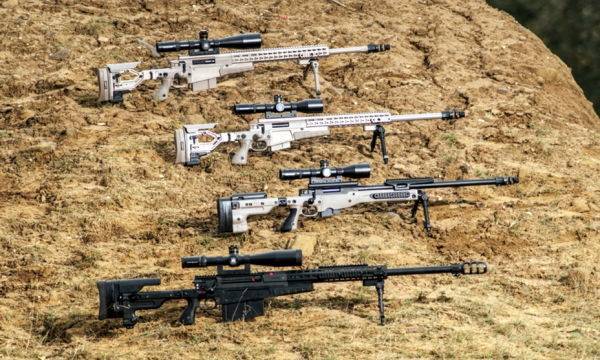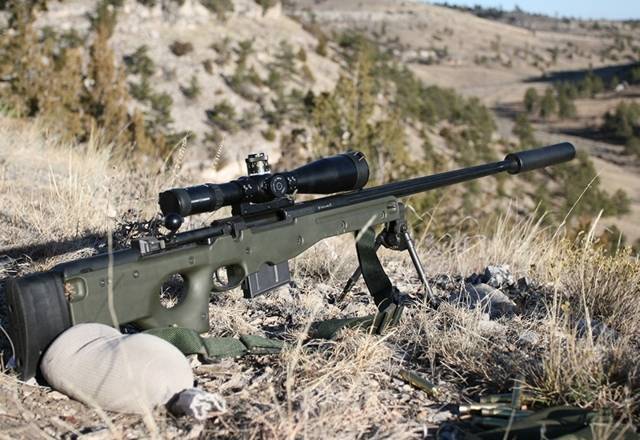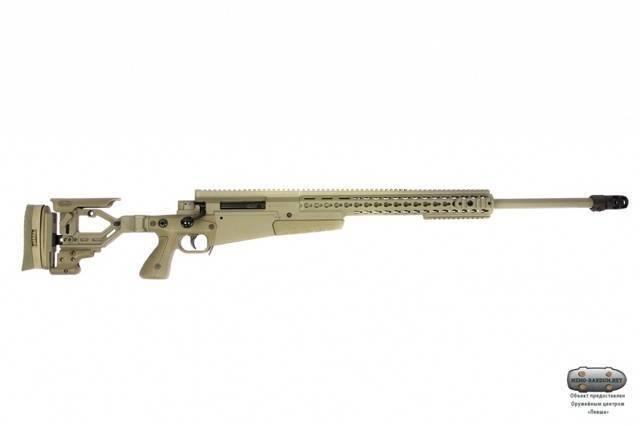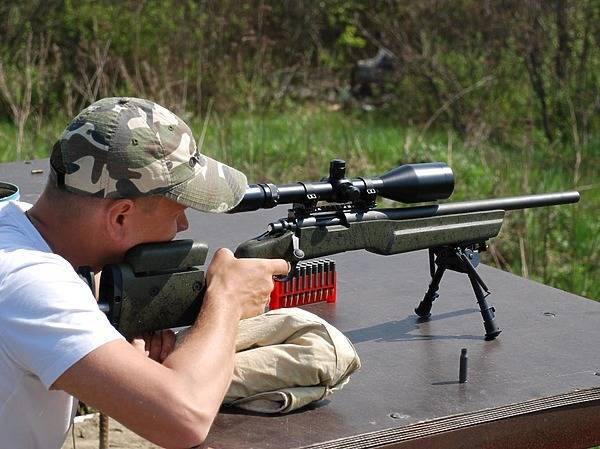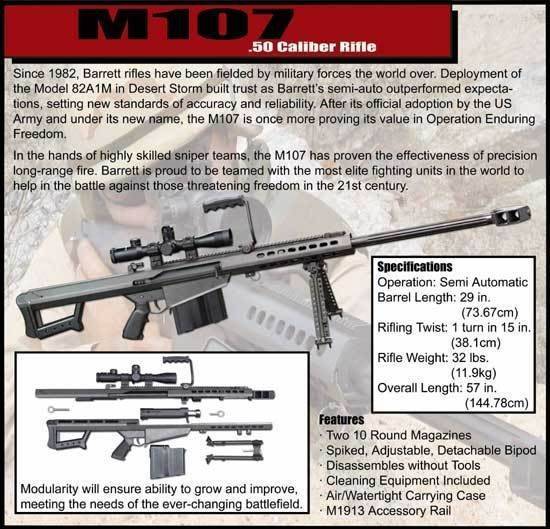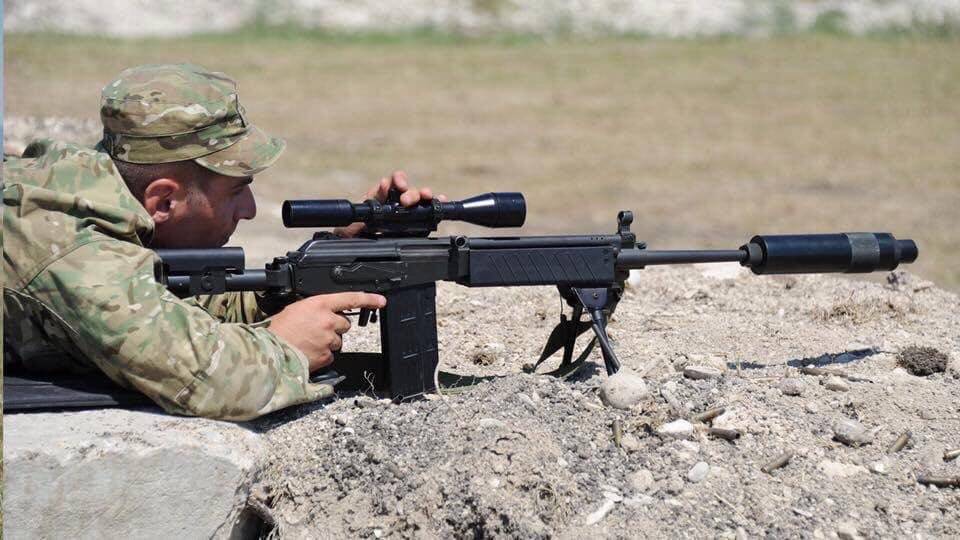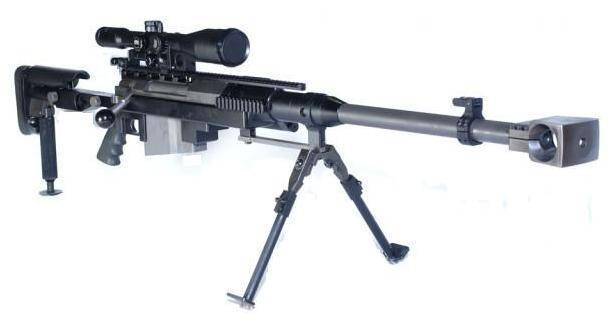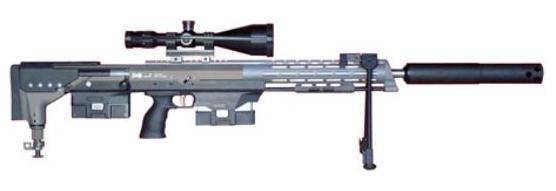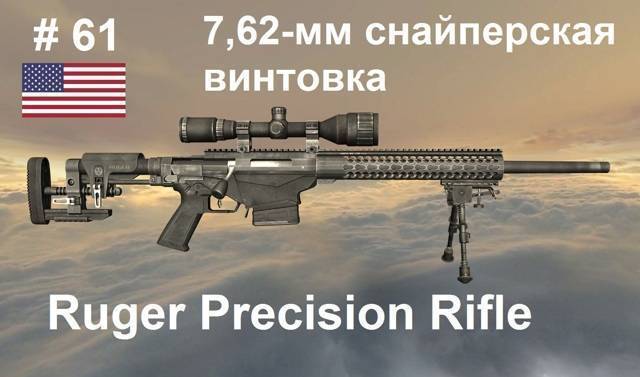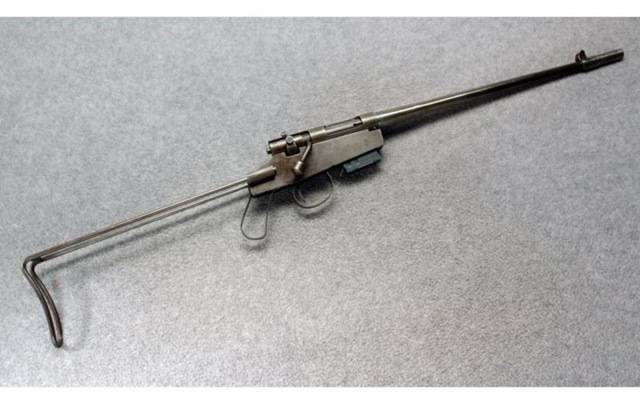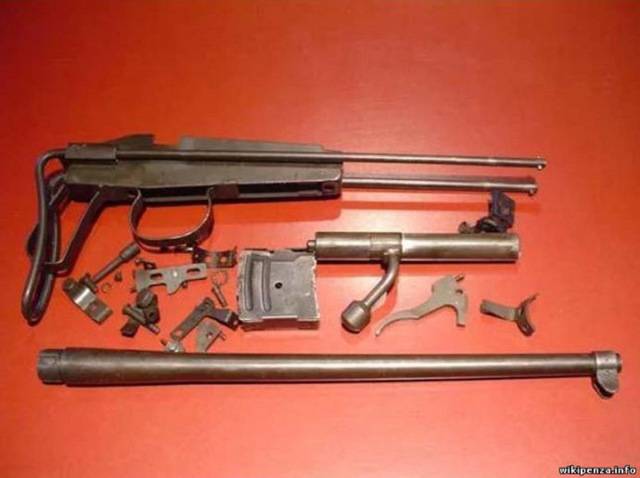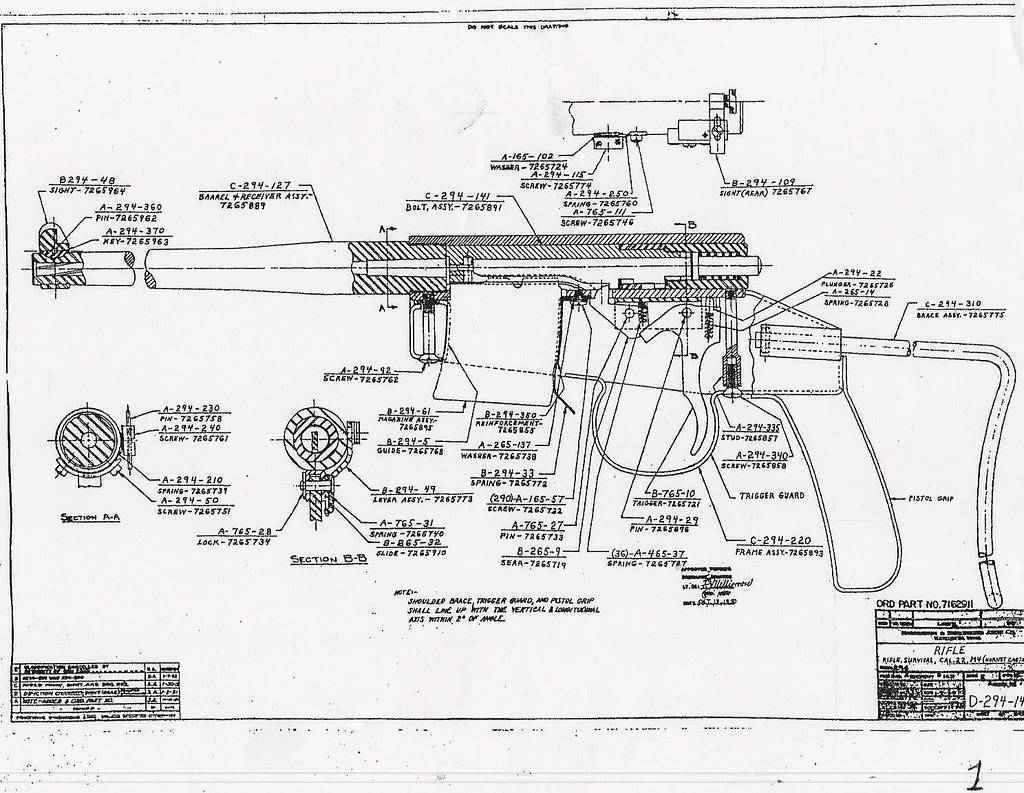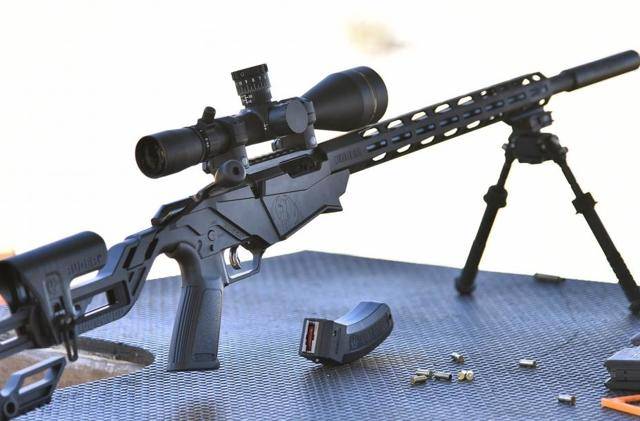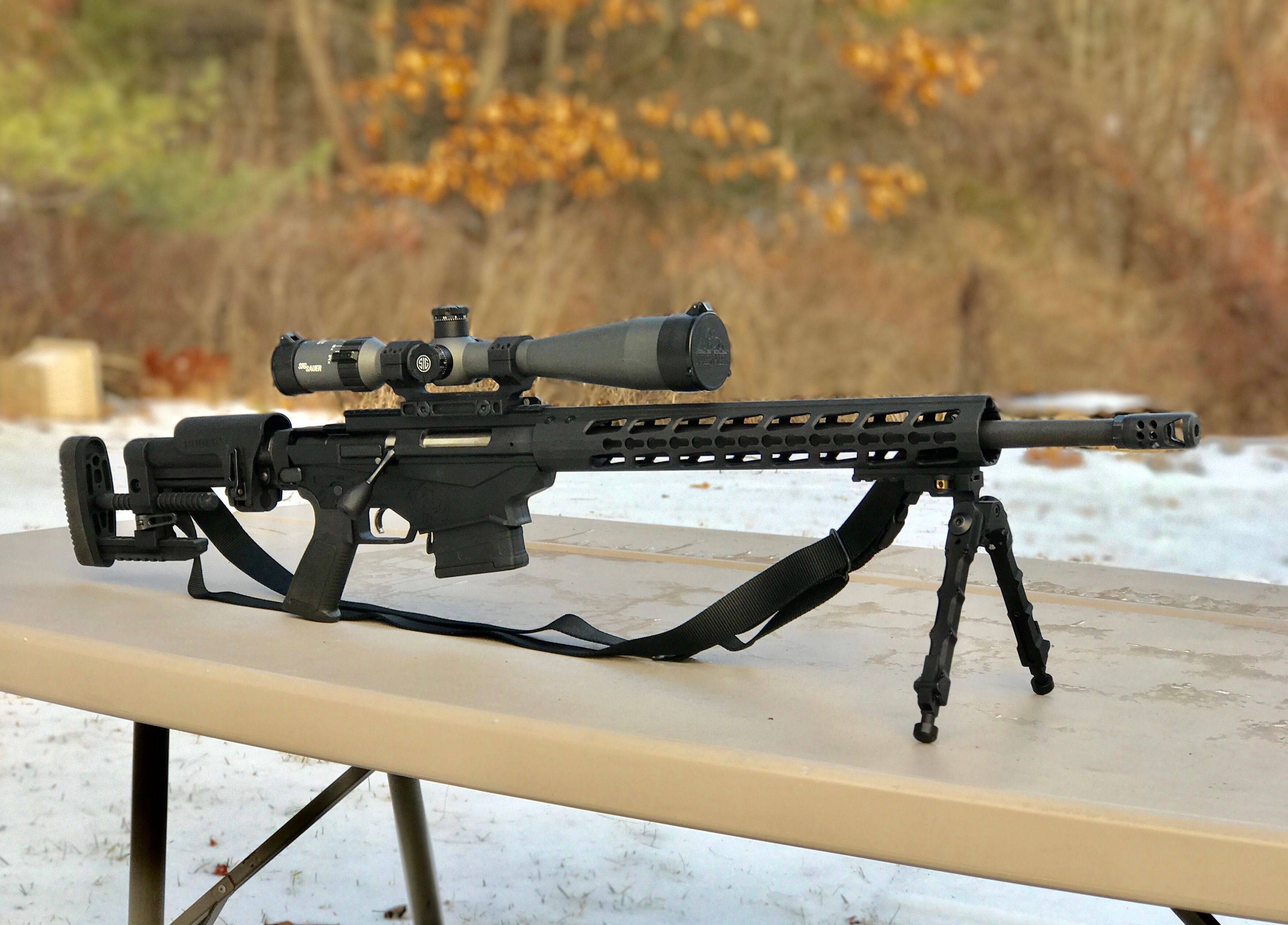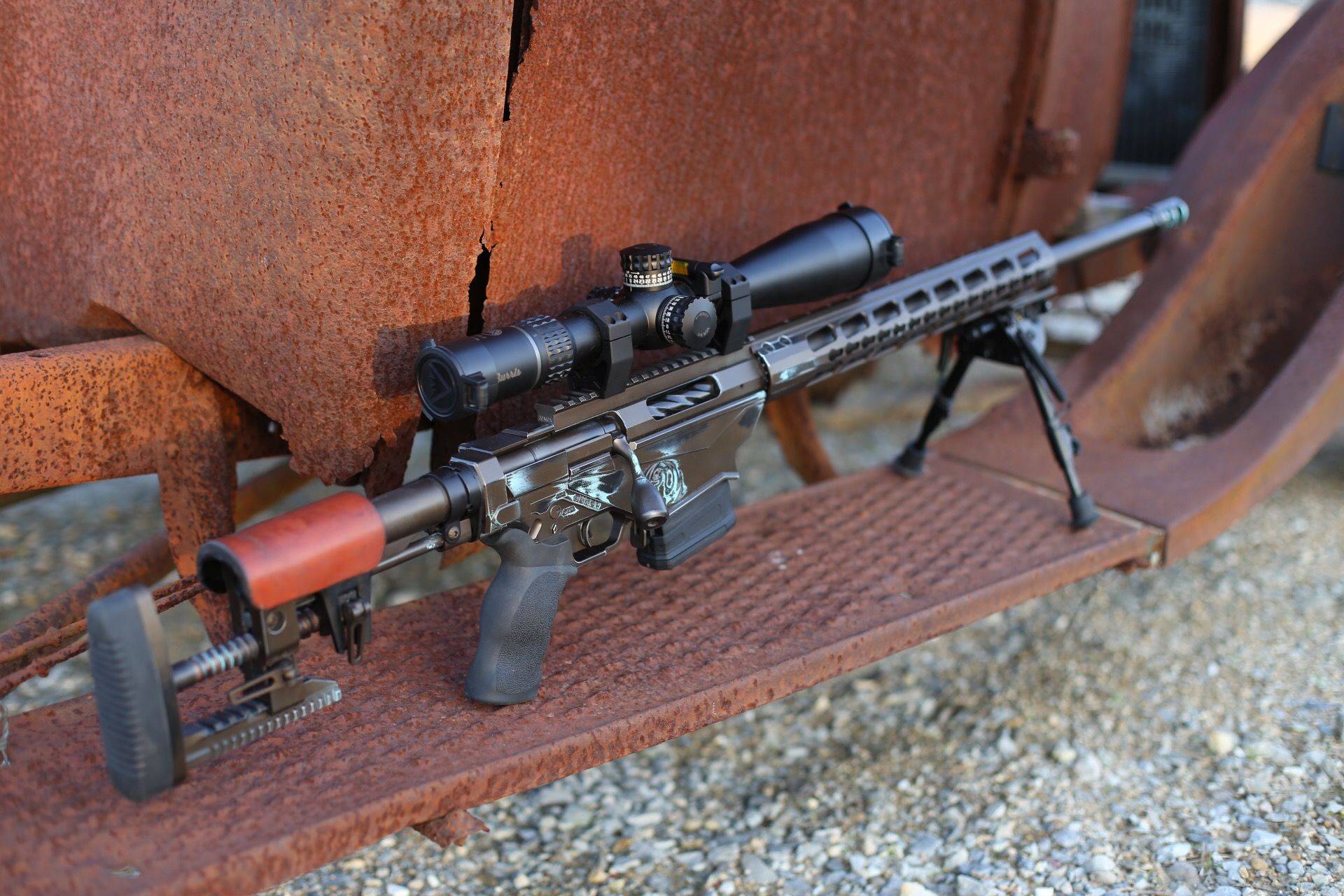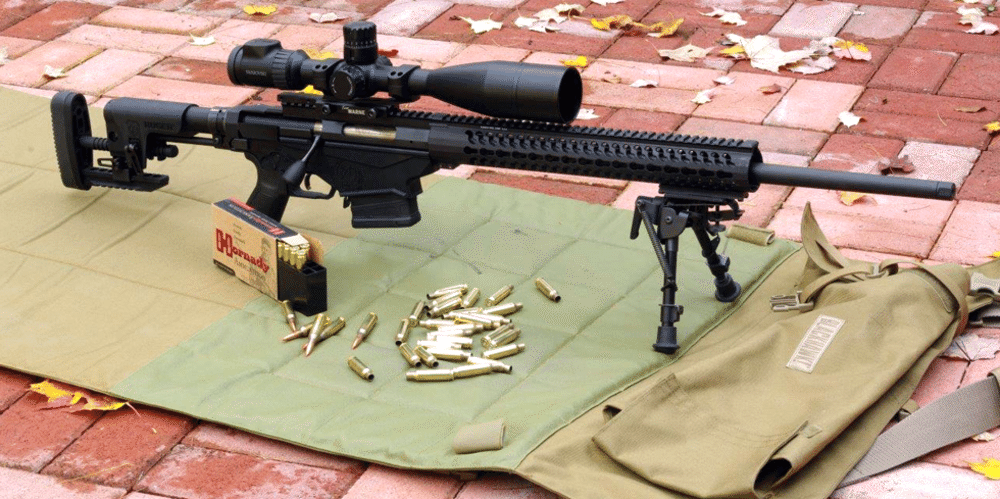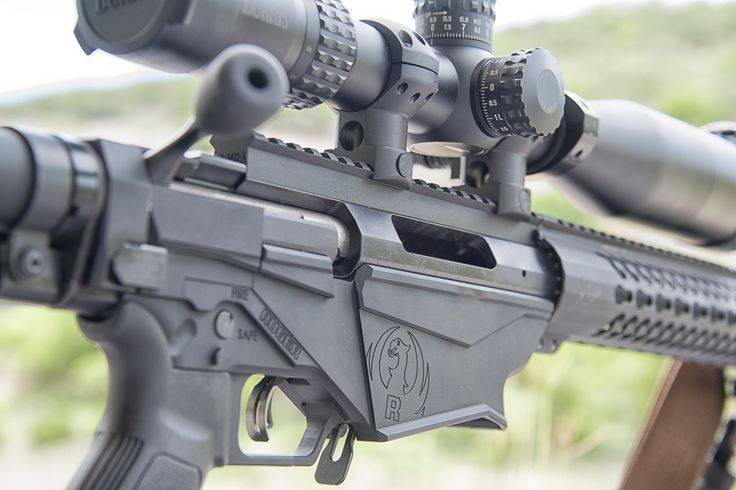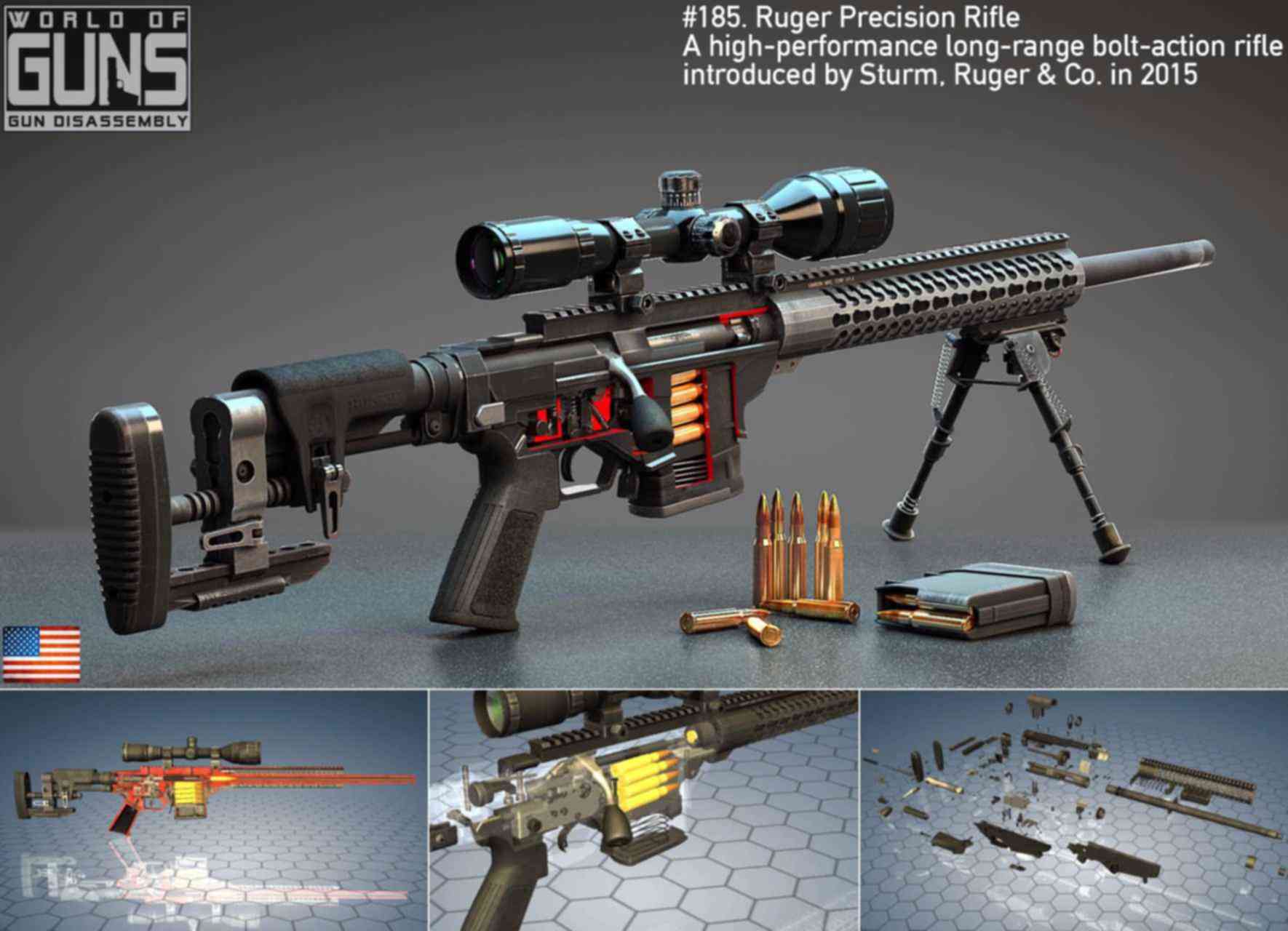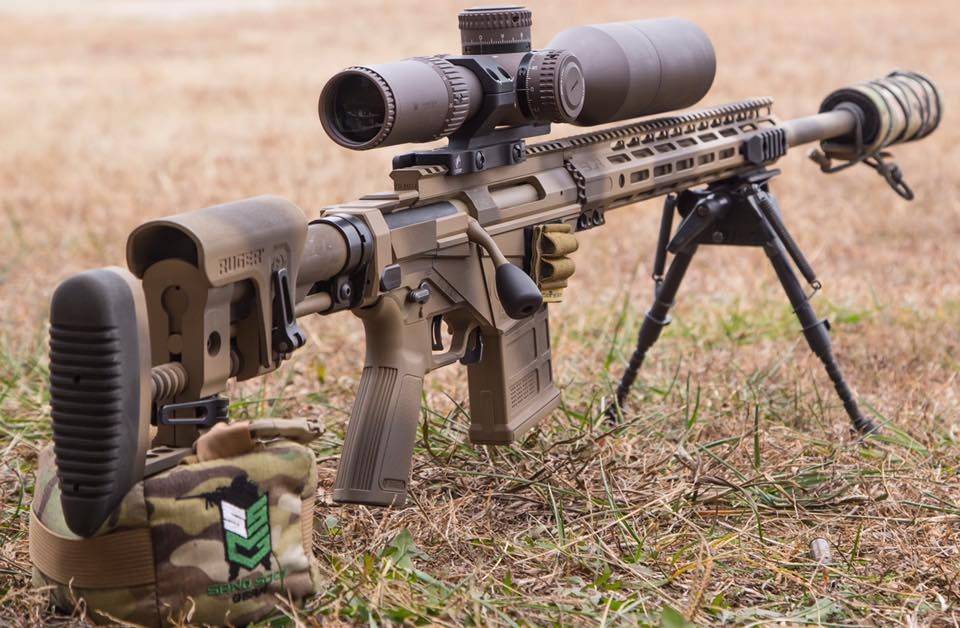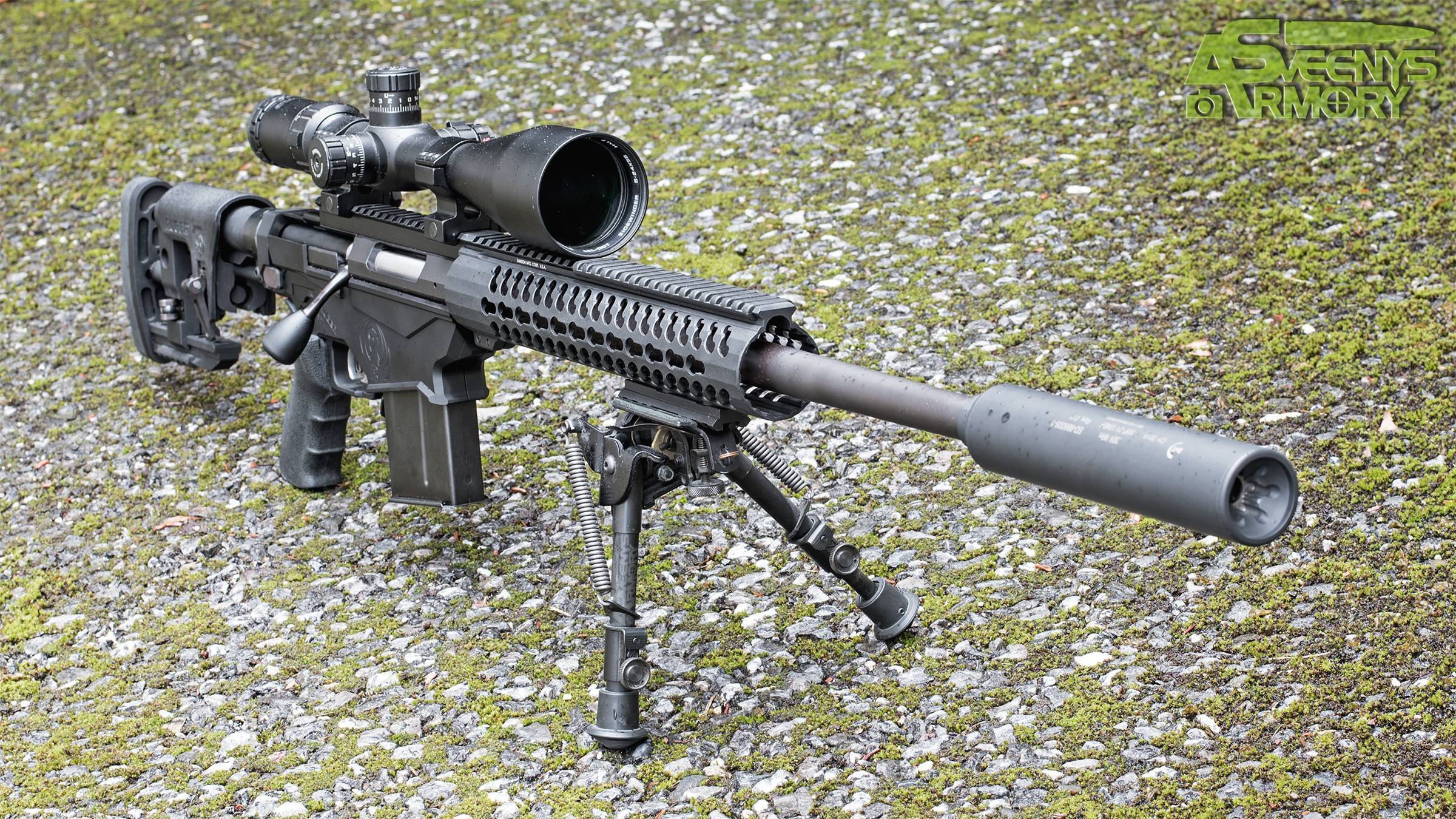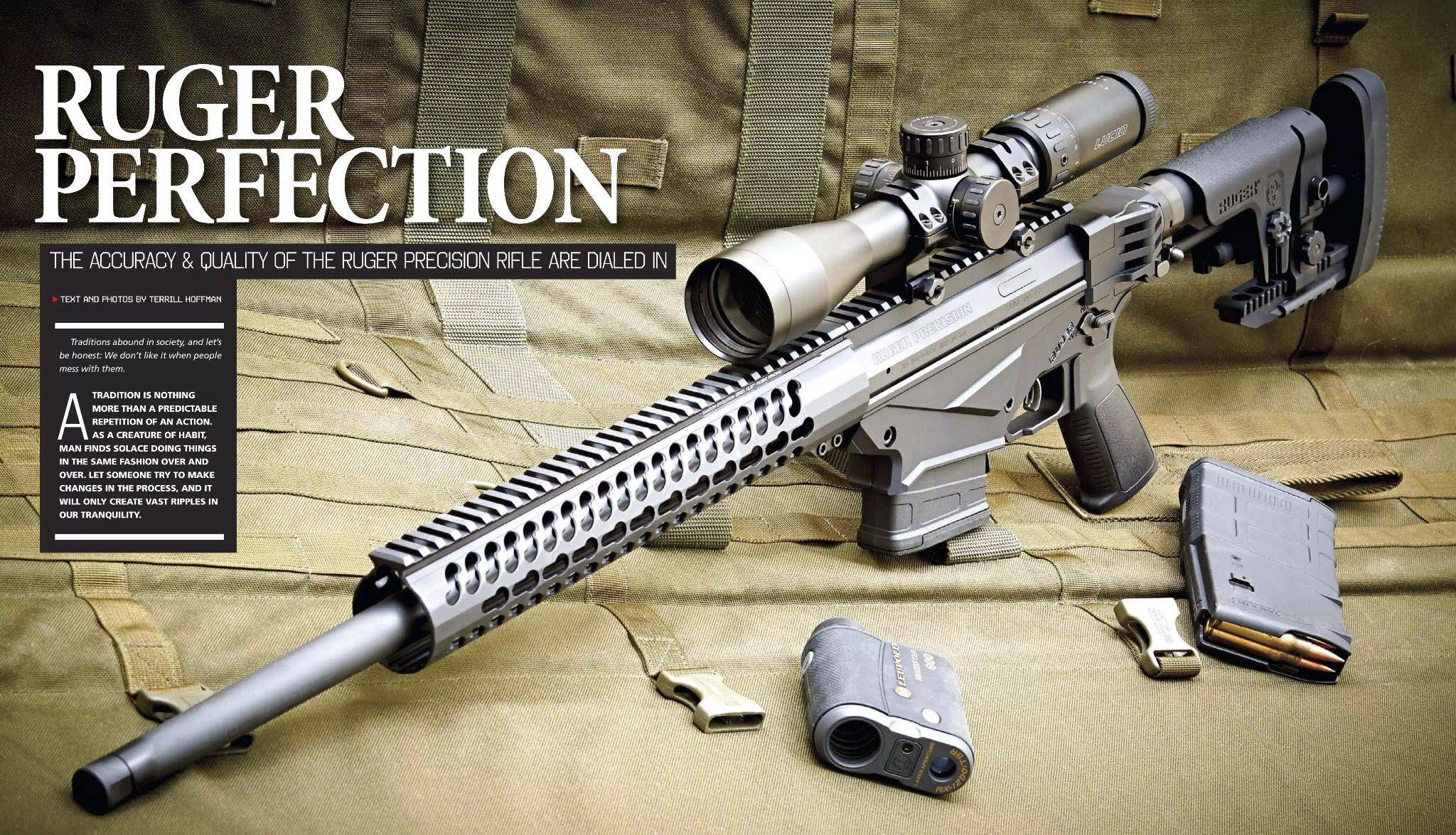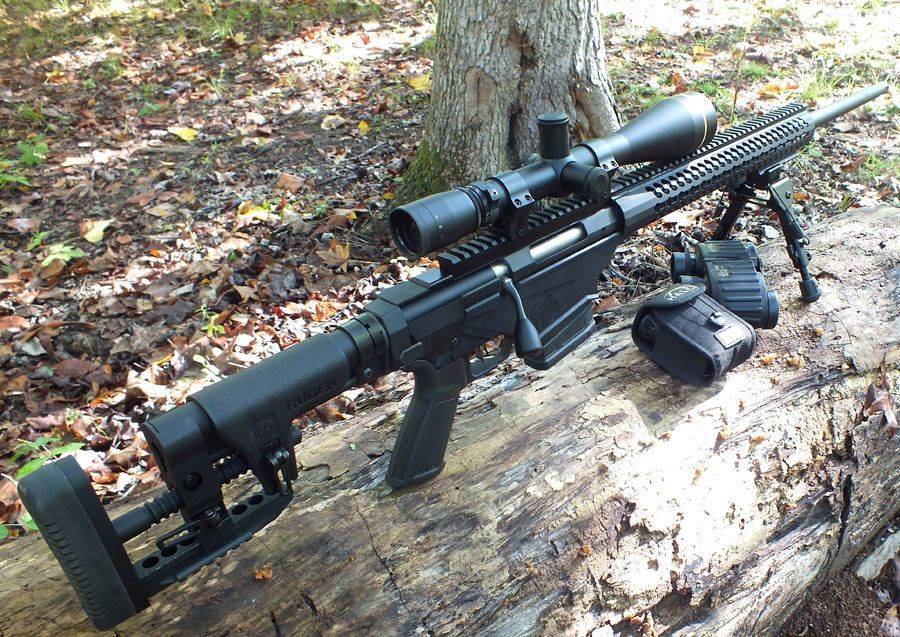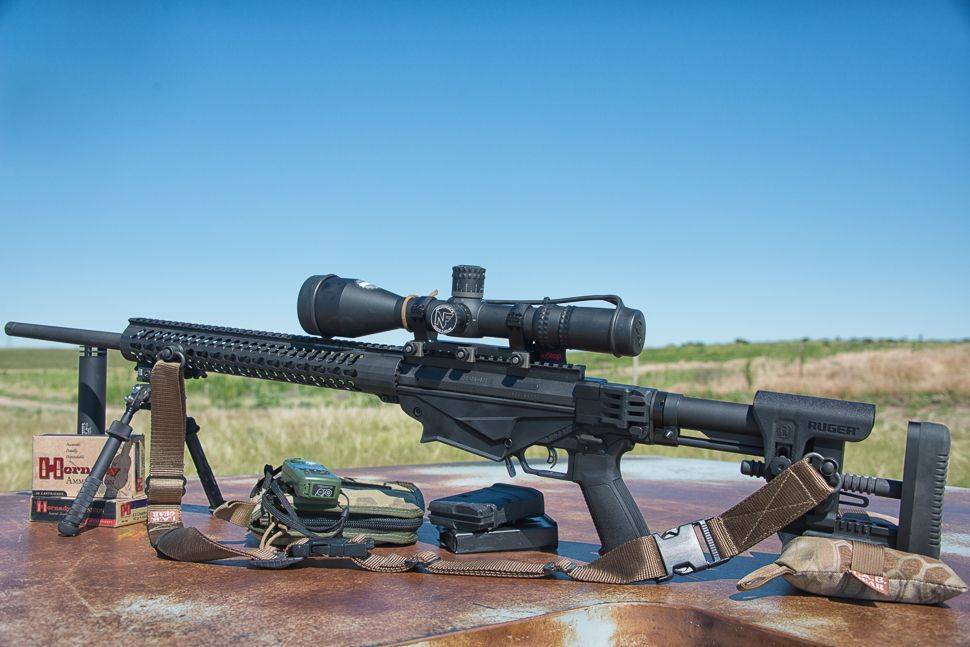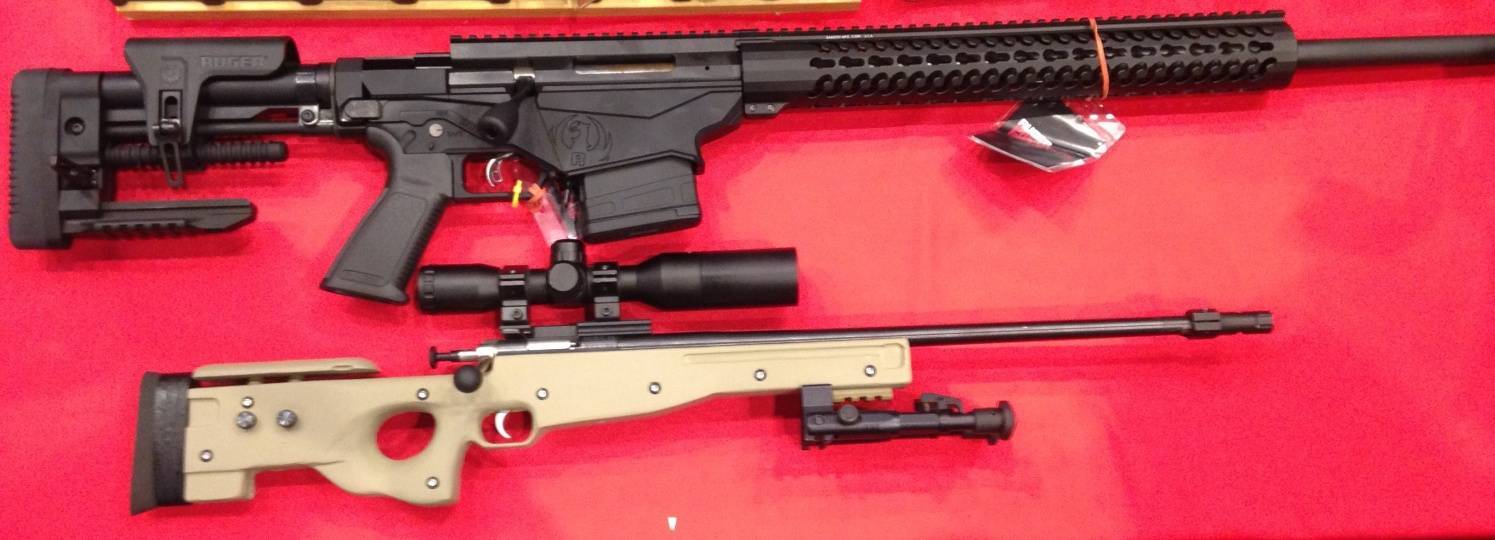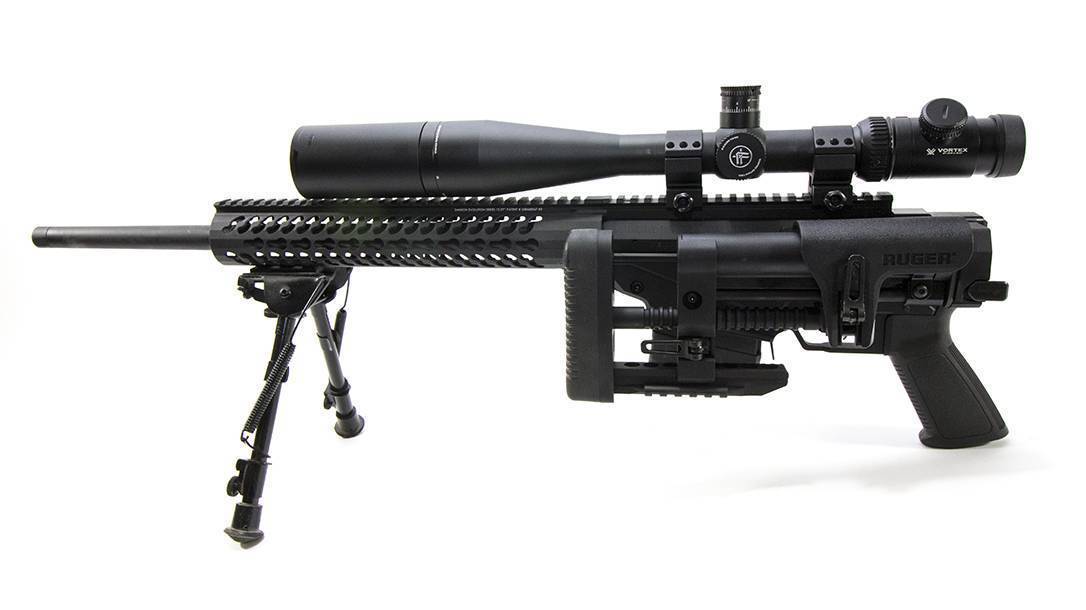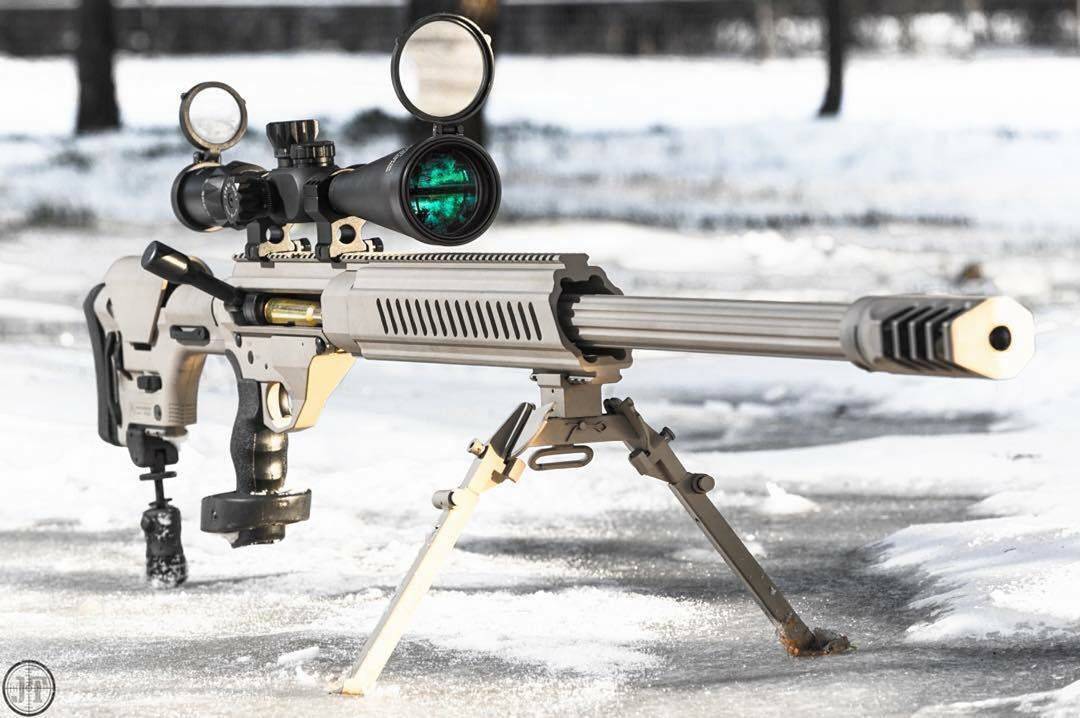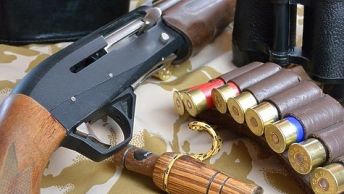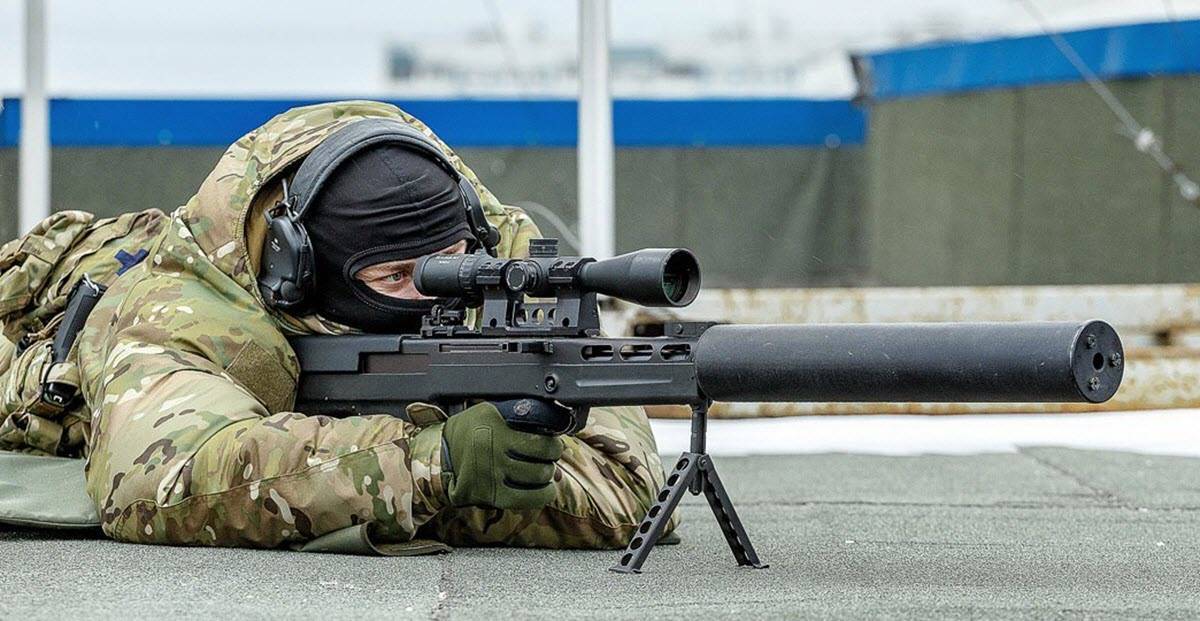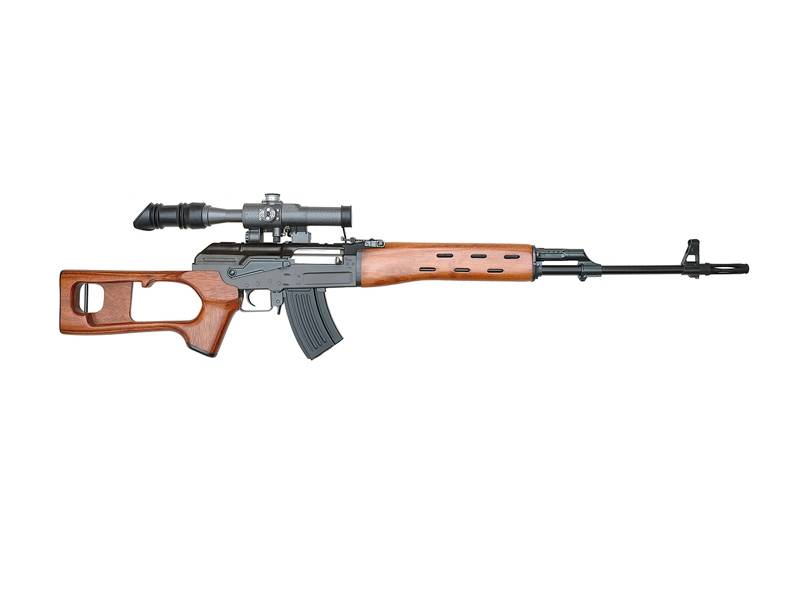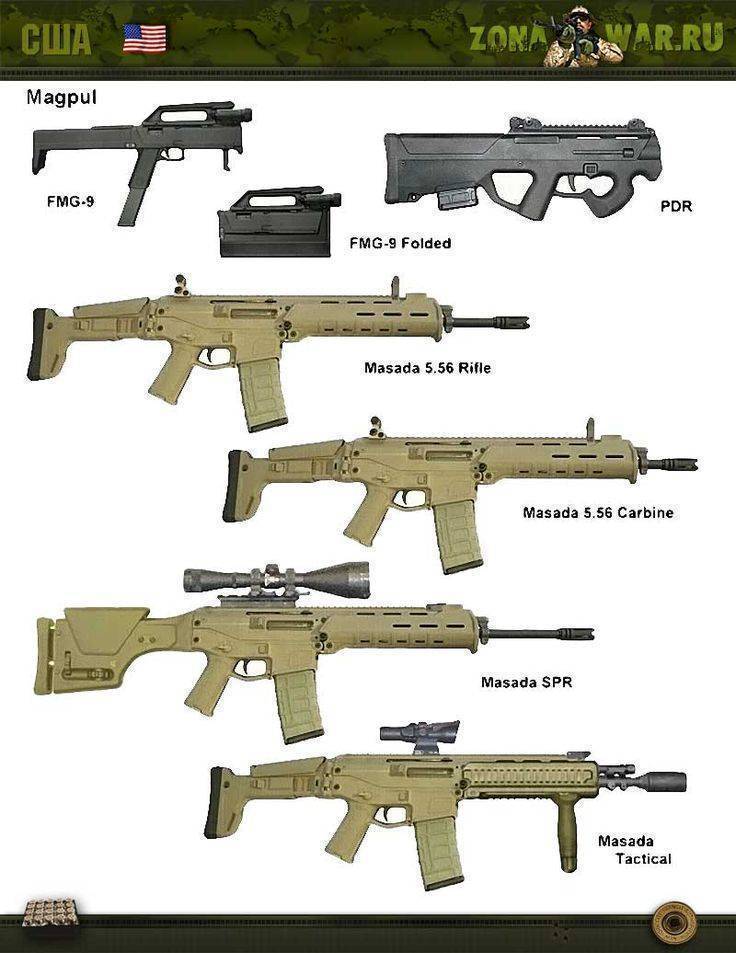Ruger Precision Rifle at Long Range
I invited several people to shoot this rifle and give me their thoughts on it. A law enforcement officer who was wanting to get into long-range shooting, a high school senior, a couple of guys who grew up shooting rifles, and one more veteran shooter who competes in long-range matches. All of the long-range shots were done from a prone position with a bipod attached.
The high school senior had never shot over 200 yards. We started by setting up on a target at 260 yards, and he got a first round hit. I then adjusted the scope for 528 yards, and the first two shots were 12” high. So I dialed an adjustment on the scope, and he got consecutive hits.
I took the rifle out again to test it at further distance. The wind that day was gusting 12-15 mph, which I knew was going to offer some challenge. I first setup on a target at 821 yards, and was able to get rounds on target on the 4th shot. After getting on, I was able to connect with five consecutive hits. So I moved out to a target at 1,000 yards, which was a 12” circle over a 16”square. I connected back-to-back hits on the circle.
After that I moved out to a 24” circle target at 1220 yards. I fired seven rounds, and heard the impact on four of them. When I went down-range, I confirmed three hits. The fourth hit was actually on another target a few feet away. I credit that to the gusty west Texas wind!
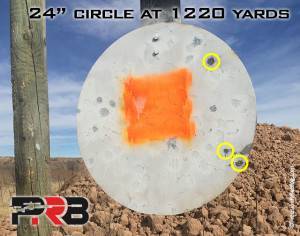
I tried stretching it out to a target at 1,415 yards. However, the wind was blowing the bullet off target and I couldn’t spot where it was landing. So I wasn’t ever able to connect at that distance. Shooting long-range is fun, but I’m still a novice at reading wind at the longer ranges.
A 6.5 Creedmoor firing a 140gr A-Max at the velocities we recorded for the Ruger Precision Rifle will go transonic at 1020 yards (meaning the bullet has slowed to 1.2 Mach and may start showing signs of instability), and it goes subsonic around 1250 yards (meaning the bullet may become erratic and less predictable). So shots beyond that can be really tough to get consistent hits. But inside of that range, the Ruger Precision Rifle is clearly capable of repeatable hits … if the shooter is capable.
What Would I Upgrade or Replace?
There is already a thriving market of replacement parts springing up around the Ruger Precision Rifle, including bolt shrouds, handguards, barrels, and other products. It seems like there are new products available every day. If it keeps up this pace, one day there may be as many options as there are for the Remington 700. It’s interesting to see how quickly so many have embraced this new platform, and shows a strong vote of confidence for the design.
We already mentioned that we’ll likely replace the handguard to see what kind of impact that has on accuracy. As we mentioned in the accuracy results, there was some indication that it could be having a negative impact on horizontal dispersion. Midwest Industries and Seekins Precision both offer replacement handguards for the Ruger Precision Rifle.
Beyond that, the only thing I’d replace is the folding stock latch. After several hundred rounds the folding stock is now loose. It has 1/8” side to side movement. The locking latch is tapered so that it easily unfolds and locks. But that means the bearing surface that ensures lockup is very small. It needs to be larger to ensure it is solid with zero play. Personally, I’d rather not have a folding stock than have one with play in the folding mechanism.
Stock
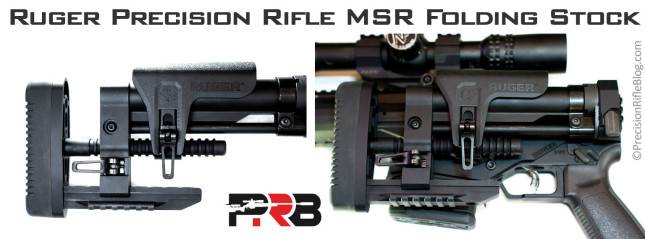
My first impression of the buttstock was favorable. The cheek comb moved smoothly forward and back, up and down … and you can even reverse it. The cam action of the length of pull (LOP) held the stock adjustment firmly in place. Over the next weeks, I used this rifle a lot. Before other shooters tested the rifle, I’d always return it to the factory positions. Then I’d watch as they used the stock and it up to shoot. All the testers appreciated the stock’s adjustability. No tools were needed to adjust it in the field. It has smooth operation, and strong, uncompromising support. What is there not to like?!
However, you’ll find mixed reviews for this stock online, and I honestly could not understand why. But, I eventually found the problem: I was about to head, to the range, to do the accuracy part of this review. I attempted to reset the stock to factory positions, and the trouble ensued. I unlocked the locking cams and could not adjust the stock. So I thought maybe the tension was too tight. I loosened the tension knob, but it still wouldn’t budge. I loosened the tension knobs further, and the entire assembly burst into small parts on my bench (it was apparently under spring tension). Believe it or not, the stock still wouldn’t adjust! So I completely removed the remaining tension knob. Now, with both adjustment cams COMPLETELY removed, the stock would still not adjust! After some investigation, I noticed the machining was very rough on the cam’s locking collar, and it appeared friction from that rough spot had frozen it in in place. A drop of gun grease solved this issue, and allowed it move freely.
Not long after that, I noticed I couldn’t adjust cheek piece forward. It had moved so smoothly before, but was now locked in place. This time it was not a manufacturing issue, but user error. Like a typical guy, I hadn’t read the instructions. I’m fairly mechanically inclined, and rarely find myself needing to pull out a manual. However, this was not a simple arrangement of parts, but a solid engineering design that kept it from moving even if the cam lock was disengaged. The cam lever is not a solid bar, but instead it’s scalloped to only allow movement in one direction. So if you turn the cam 180 degrees and it locks movement forward and back. Once I learned the right way to do it, I had no issues.
Not only does the stock allow you to adjust the length of pull and cheek rest position (height and for/aft), but it also allows the user to cant the rear of the stock in either direction to improve shoulder contact. These types of tweaks can allow you to customize the rifle to better fit the shooter, and legendary shooters like David Tubb would tell you that can directly correlate to improved accuracy downrange.
A LE officer who used the rifle loved the folding stock. This allows you to put it in a smaller case for easy transport. (Safety note: The rifle will still fire with the stock folded.)
Synopsis: With a little gun grease and a reading of the manual, this is a great stock.
Guest Author & the Best Christmas Gift Ever
Recently a close friend asked me to help surprise her husband with a rifle for Christmas. She had heard him mention one rifle in particular, and asked if I recognized what kind it was as she slid a photo of it in front of me. Of course, I instantly recognized the most talked about rifle in recent years … the Ruger Precision Rifle (RPR). I helped her find one, and I have to believe that could go down in history as the best Christmas gift ever.
The lucky recipient of the Ruger Precision Rifle was Obadiah Barnes, a buddy I shoot with regularly, and I was ecstatic to see him get it. Not just because I was proud for him to own a capable long-range rifle … but I was also excited because he has the same detailed, balanced, say-it-like-it-is personality that researches and analyzes everything to death! So I was hoping he could help satisfy the throngs of people asking for an objective review of on the RPR. Ruger initially invited a handful of writers to a private ranch for a chance to experience the Ruger Precision Rifle … and of course the rifles they had there shot! But what can a normal customer expect when you buy one off a retail shelf. OB gives us a 100% honest assessment.
OB has a great perspective for this, because like a lot of us he’s a hunter that is very familiar with rifles, and he’s been working to extend his range over the past couple years using the equipment he has. So this new rifle is able to compliment the foundation he’s already started to build, and hopefully unlock a lot of potential. I wholeheartedly believe good equipment does NOT make a good shooter. A good shooter is only built by spending time behind the rifle, sending rounds down range and honing his skills. But good equipment can make a good shooter better. So I couldn’t wait to hear about the results OB was able to achieve with this rifle.
He also invited other shooters with a range of backgrounds to try the rifle, and took meticulous notes on their comments, carefully watched how each handled and shot the rifle, and kept track of the performance they were able to coax from the rifle. This included guys who’d never touched a precision rifle, one law enforcement officer, and guys with a safe full of custom precision rifles. So the resulting review is a compilation of those views, delivered by a very detailed guy. Of course, I (Cal, author of PrecisionRifleBlog.com) am a helpless control freak, so I couldn’t stop myself from making a few tweaks or inserting some comments from other sources on the Ruger Precision Rifle … but for the most part, the rest of this post will be OB speaking. It takes a lot of work to put this stuff together, so please chime in below in the comments and thank him for his helpful review!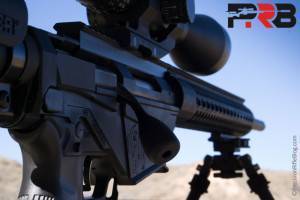
Handguard
The handguard is decent, but has some flex. As you can see in the photo below, mine is actually not centered with the barrel, and this is how it came from the factory. The majority of the accuracy test for this review was performed from the prone position using a bipod attached to the end of the handguard. That is how it would be shot in a precision rifle match, not off of sand bags. There is some evidence that suggests the offset and flex in the handguard had a negative impact on precision, but we felt like it was important to test the RPR in the way it is marketed to perform. More on this in the accuracy tests below.
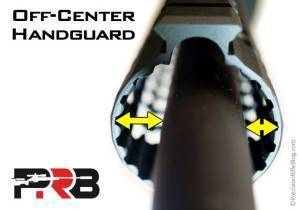
The Ruger Precision Rifle Review
Ruger filled an emerging market with a new feature-packed rifle. Every section of the rifle was designed with long-range shooting in mind. Perhaps the design team at Ruger wanted to shoot long-range, and like kids in a candy store, they tried to pack everything they wanted into this rifle. All the upgraded/specialized features for a long-range custom gun are here: adjustable stock, smooth 70 degree bolt, adjustable trigger, detachable box magazine, 20 MOA tapered scope rail, etc. Just add a decent scope, and you’re off to the races!
While this rifle is very capable straight out of the box, there is already a thriving aftermarket community offering all kinds of upgrade parts for this platform. Ruger designers intentionally made many of the parts compatible with the AR-15 platform, so many of its’ parts are easily interchangeable with a ton of parts out there that are readily available. The buttstock, handguard, bolt knob, pistol grip, and safety can all be swapped out.
One particularly attractive design elements is the option to easily replace the barrel with a pre-chambered, drop-in replacement barrel using AR-style wrenches and headspace gauges. That means the barrels don’t have to be custom chambered and headspaced for a specific action, which can dramatically cut costs. There is already a competitive market for replacement barrels. (Safety note: Ruger still recommends using a competent gunsmith. Barrels are NOT a safe place to do it yourself and hope it works.)
Let’s take a look at the specs of the Ruger Precision Rifle we tested:
- Caliber: 6.5 Creedmoor
- Barrel: 24” Cold hammer-forged 4140 chrome-moly, 5R rifling, 1:8 twist, muzzle threaded 5/8×24 for brake or suppressor
- Stock: Side-folding with adjustable cheek rest and length of pull
- Magazines: Two 10 round Magpul PMAG magazines (but will work with AICS mags and many others)
- Weight: 10 lbs. 15.1 oz. (includes empty mag)
- Price: $1,399 MSRP
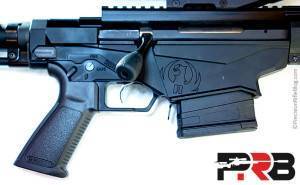
Magazine Well

The Detachable Box Magazine (DBM) System on this rifle is well designed and functional. It has an innovative patent-pending design that allows you to use several types of magazines interchangeably, including the legendary AICS magazines, popular Magpul PMAGs built for large-frame AR’s, and other SR-25, M110, DPMS magazines … and even a few more! You have lots of options. Ruger includes two 10 round PMAGs, and we also used AICS and Alpha magazines during the accuracy test. All of them functioned fine. There is an audible click seating the magazine AND when releasing it.
The mag freely falls straight out when it is released. The LE officer who tested this rifle loved that feature. He liked the ability to drop a mag to the ground, change it out, while looking down range.
Accuracy Testing
Ruger conducted internal testing several months ago, and they measured an average group size of 0.83” at 100 yards (0.79 MOA) over multiple rifles. When first introducing the rifle, Ruger hand-selected a dozen gun writers to come test their new product at a private ranch in Texas, and (probably as you’d expect) the rifles they used shot slightly better than that average. One writer on that trip reported average groups of 0.76” at 100 yards. But as Ruger feels the pressure to increase production to meet demand for this new rifle, what can you really expect from more recent batches of rifles?
I believe in real world accuracy. The majority of our groups for record were fired from a bipod in the prone position, just like you’d be using it in a match. We used multiple shooters to get a good average. We fired a total of 23 five-shot groups at 100 yards using 3 types of match-grade ammo.
Group Size (MOA) | ||||
|---|---|---|---|---|
| Accuracy Results | Avg | Min | Max | Velocity |
| Hornady Match 140gr A-Max | 0.91 | 0.28 | 1.57 | 2,674 |
| Prime Ammo Match 130gr HPBT | 1.09 | 0.57 | 1.53 | 2,809 |
| Berger 130gr Hybrid Handloads | 1.08 | 0.82 | 1.35 | 2,837 |
The muzzle velocities above were recorded using a LabRadar Doppler Radar, which is accurate to +/- 1 fps. It represents the average muzzle velocities of all shots with that ammo. The muzzle velocity SD (standard deviation) wasn’t amazing for any of the ammo. They ranged from 12-20 fps SD’s, so with more consistent ammo you could likely tighten these groups up some.
We used a target analysis software to do all the group size calculations. It provides a few other helpful stats about the groups, like these:
- Average Distance To Center Of The Group = 0.39 MOA
- Average Group Width = 0.79 MOA
- Average Group Height = 0.81 MOA
One thing we noticed during the test was the handguard had some flex, and was also slightly off-center in relation to the barrel. So after seeing how the groups were shaping up, I started to wonder if some of the inconsistency was related to the handguard. We fired most of our groups from a bipod (since that’s how most people will use the rifle in the field), but many other reviews test accuracy from a bench using sandbags. I wondered if the torque we were putting on the handguard by loading the bipod was having an impact on precision. So we removed the bipod and setup sandbags (still firing from prone) … and over several more five-shot groups, the horizontal dispersion of our groups shrank by 30%.
That doesn’t mean the groups were 30% smaller. It means the width of the groups shrunk, but the group height was sometimes the largest dimension of the group. That may mean you could shrink the extreme spread of the group if you used ammo with more consistent muzzle velocities (single digit SD’s), and used the rifle off sandbags. It may not be a dramatic change, but it may be able to get you closer to 0.6-0.7 MOA with this rifle. The group sizes in the stats referenced earlier are averages over all groups fired, which includes those off a bipod and off sandbags.
We’ve seen other online reports where shooters observed horizontal “walking,” and a few attributed that to the handguard. Our results seem to corroborate that theory. We have plans to upgrade the handguard, and in a future post we’ll give an update on if there is any measurable accuracy improvement from that modification.
So overall, the rifle we tested held around 1 MOA across all the ammo and scenarios. That might sound great to some guys and disappointing to others. I’d encourage you to read the “How Much Does Group Size Matter?” post from a few months ago to see how group size impacts hit probability at long-range. For example, it shows one scenario with a 6.5 Creedmoor capable of 1 MOA precision that is trying to hit a 20” target at 1000 yards, and it has a 70.4% probability under the specific conditions in that example. If you held all those conditions to be the same, and just swapped in a world-class benchrest rifle capable of 0.1 MOA accuracy … you’re hit probability would only increase 5%! You go from 70.4% with the 1 MOA rifle to 75.4% with the 0.1 MOA rifle! There are just a lot of other factors and uncertainties that come into play at long-range, and inherent precision of the rifle is just one of them. I’m not saying precision doesn’t matter, but you might be surprised what you learn in that post.
Overall Take-Away
I paid full retail price for this rifle. Ruger did not provide it for review. So I’m giving you a 100% honest, tell-it-like-it-is view of my experience from initial impressions through the first several hundred rounds. Overall, I’d give this rifle four stars out of five. There are a few quirks that could be improved upon, but overall it is a solid setup that I’m really happy to own.
Ruger is trying to get new shooters to the sport at an affordable price. Sure, there are better parts they could include or upgrade, but I’d leave it as is to preserve the current price point. It is easily customizable, and you can upgrade it if you choose. Bottom line, the Ruger Precision Rifle is an excellent entry point and great foundation to build on for long-range shooting.
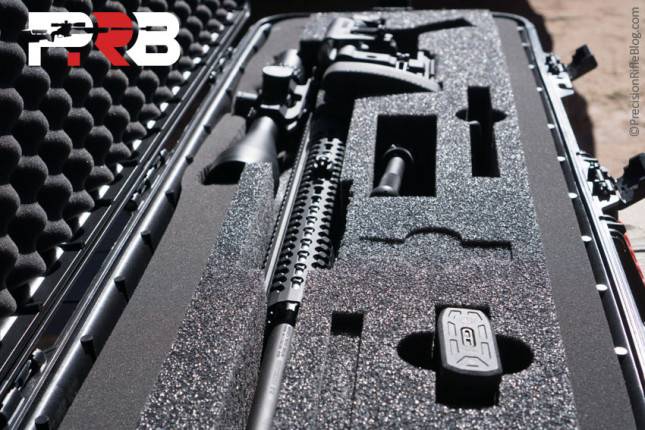
Trigger
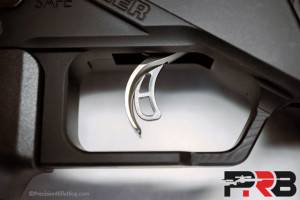
The trigger came from the factory set at 2.25 lbs. I measured the trigger pull 20 times, and it was consistent. I was able to adjust the trigger from 2.25 to 4.3 pounds (Ruger advertises 2.25-5.0). I was a fan of the consistent and clean break this trigger provides. It features a Savage-style safety lever within the trigger, which some say gives it a feel like a two stage trigger. It may not be preferable to some shooters used to conventional single-stage triggers. One shooter pulled through the blade and set off the trigger. It took him awhile to get accustomed to it, but it is a very capable trigger … especially for a factory rifle.
Bolt

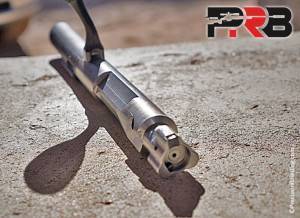
The bolt ran smoothly and cycled effectively. Like others, I was initially concerned about the plastic bolt shroud. That is often the first item people upgrade with aftermarket parts like Long Rifles Inc.’s billet bolt shroud. Some reported that bolt shroud came loose inside the bolt raceway, or chipped apart from use. When I first got the rifle, I was pretty much resigned to the fact that I’d need to upgrade the bolt shroud based on everything I’d read on forums and seen on YouTube.
I watched a video overview of the rifle and thought the bolt disassembly seemed straightforward. It is not. I apparently did it wrong the first time, because it came apart on the fourth shot of a 5-shot group. During the malfunction, the firing pin and bolt shroud remained in the buffer tube, preventing the bolt from cycling. Once again, this malfunction seemed to stem from user error. I watched a video from Ruger on disassembly several times and finally figured out the correct way to do it.
After that experience, I was determined to see if something like that would happen again and I tested the durability of the bolt shroud. 114 rounds were fired during the accuracy portion of the review. In addition to that, the bolt was manipulated 200 times. Next, the bolt was cycled, then bolt shroud was removed and reassembled 400 times. After these 714 bolt manipulations without any issues, the bolt shroud did show minor signs of wear, but was still riding securely on the back of the bolt. Honestly, I don’t need to disassemble my bolts very often. So after lots of use, I’m thinking the bolt shroud may be the last thing I’d upgrade. The one failure I experienced seemed to be due to user error, and not the durability of the shroud.

